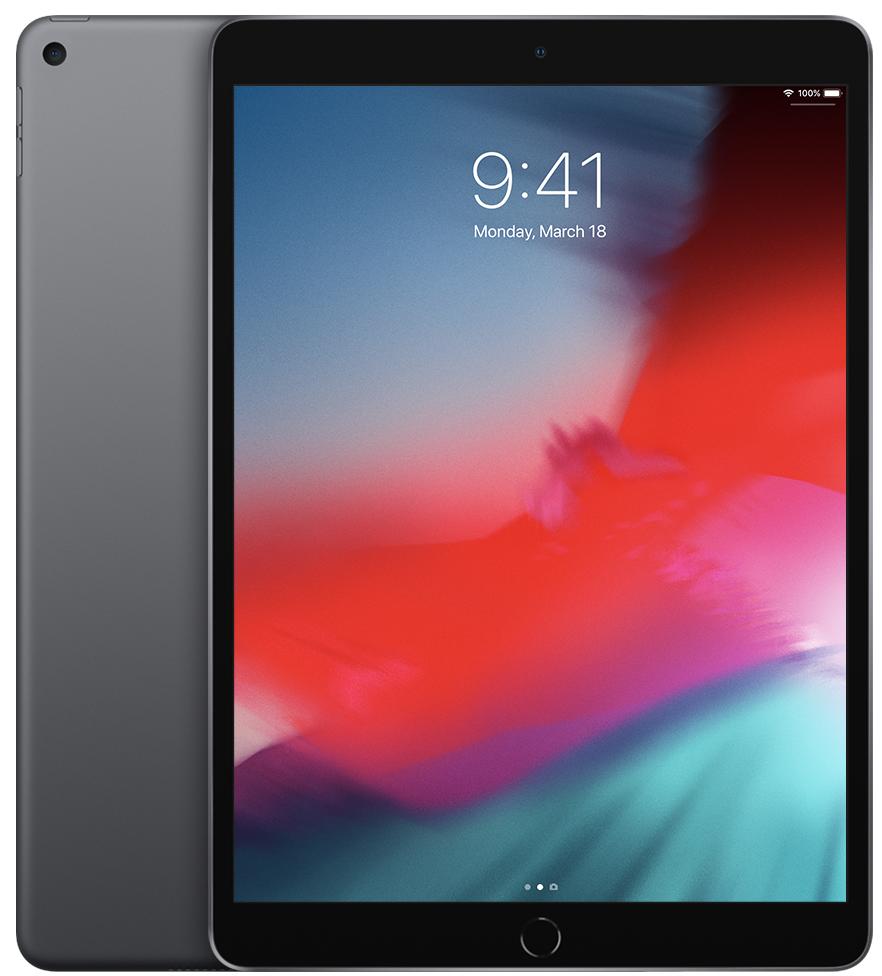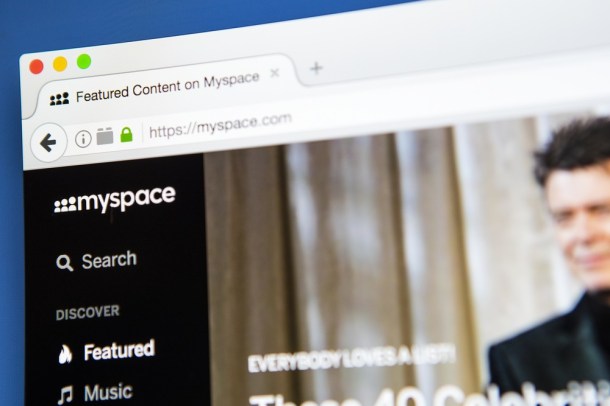We're a virtual company made up of tech experts from across the globe. We live and breathe iPads for our daily use, and have tested nearly every one to find the best picks for you. With Apple's newest iPad offerings, which one should you pick up?
10.5-inch iPad Air (2019)
Better features, bigger size

Starting from $499 at Apple
Pros
- Larger 10.5-inch screen
- A12 bionic chip
- Storage up to 256GB
- True Tone display
- Has Smart Connector
Cons
- Still uses Touch ID
- Only supports first-generation Apple Pencil
The new iPad Air (2019) is a great choice if you're looking for an affordable iPad. The larger screen means you can see more at once, the A12 bionic chip gives you faster processing speeds than its predecessor, and the True Tone display equates to color accuracy in ambient light. The Smart Connector also lets you use accessories like the Smart Keyboard, and having larger storage capacity is always a plus. Unfortunately, it still doesn't have Face ID and can only use the first-generation Apple Pencil.
9.7-inch iPad (2018)
Great budget pick

Starting from $250 at Amazon
Pros
- Very affordable
- 9.7-inch screen is not too small or too big
- Supports first-generation Apple Pencil
- A10 Fusion chip is still fairly capable
Cons
- Still uses Touch ID
- Lack of True Tone
- Only up to 128GB storage
- Front camera is a measly 1.2MP
If you're on a budget, the 9.7-inch iPad (2018) is still a decent option. The screen is not too small or too large, it supports the first generation Apple Pencil, and the A10 Fusion chip is plenty capable of everyday tasks. But if you want the bells and whistles like True Tone, more storage, a more powerful processor for resource-intensive apps and games, then another iPad may be a better fit.
Both the 9.7-inch iPad (2018) and 10.5-inch iPad Air (2019) are affordable options if you can't go for the more expensive iPad Pro, but the new iPad Air is definitely the better pick of the two right now.
Let's break it down
Even though you may find the 9.7-inch iPad (2018) more enticing due to the lower price tag, the new 10.5-inch iPad Air (2019) is definitely the better buy. You're getting a ton more features, and the price difference between the two is not that big.
| iPad Air (2019) | iPad (2018) |
| Cost | From $499 and up | From $329 and up |
| Wi-Fi only | Yes | Yes |
| Wi-Fi + Cellular | Yes | Yes |
| Screen size | 10.5-inch | 9.7-inch |
| Dimensions | 9.8-by-6.8-by-0.24 inches | 9.4-by-6.6-by-0.29 inches |
| Weight | 1 pound | 1.03 pounds |
| Storage | 64GB or 256GB | 32GB or 128GB |
| Display | Retina | Retina |
| Resolution | 2224-by-1668 | 2048-by-1536 |
| Laminated display | Yes | No |
| Antireflective coating | Yes | No |
| True Tone | Yes | No |
| Chip | A12 Bionic | A10 Fusion |
| Apple Pencil | First-generation only | First-generation only |
| Smart Connector | Yes | No |
| Back camera | 8MP | 8MP |
| Front camera | 7MP | 1.2MP |
| Audio | Two speakers | Two speakers |
| Face ID | No | No |
| Touch ID | Yes | Yes |
As you can see, while they both look similar in some aspects, the iPad Air (2019) is far superior.
With the new iPad Air (2019), you're getting an upgraded 10.5-inch screen. That means you can see more on the tablet at once, which is always a plus when reading, writing, or drawing. That also means it's easier to watch video or edit photos on-the-go. It may not seem like a huge jump from the previous 9.7-inch screen, but it really helps when you need it to.
The A12 Bionic chip also means that the new iPad Air (2019) is much faster than the iPad (2018), and it should be able to handle more resource-intensive apps and games. And when you're multitasking with split screens, the iPad Air is far more capable of handling whatever you can throw at it.
iPad Air (2019) also has more storage capacity than the iPad (2018). This means that you get 64GB and 256GB options, instead of 32GB and 128GB with the iPad (2018). We believe that having more storage capacity on a device like the iPad is always a good thing, especially if you plan on putting a lot of media or files on it.
True Tone was first introduced on the iPad Pro in 2016, and it has made its way onto most iOS devices ever since. The iPad Air (2019) now has True Tone, and it provides users with color accuracy in ambient light. It's dynamic, and adjusts the temperature, intensity, and percentage of white light on the display depending on your current environment. The end result is a display that appears and feels more natural, and has less strain on your eyes. Having this feature on the iPad Air (2019) is a nice addition.
Apple also first introduced the Smart Connector in the iPad Pro. The Smart Connector is a port on the left side of an iPad that provides power and a data connection to certain accessories. With the iPad Air (2019), there is now a Smart Connector, making it the first non-Pro iPad to have it. This means you can use Apple's Smart Keyboard, which does not have a battery and can receive updates through the iPad.
And finally, while the iPad Air (2019) and iPad (2018) both have the same rear-camera specs, there's a big difference with the front-facing cameras. The iPad (2018) only has a measly 1.2MP front-facing camera and can only do HD video up to 720p. The iPad Air (2019), however, has an impressive 7MP front camera and can do 1080p HD video.
Who should buy the 10.5-inch iPad Air (2019)?
Anyone who is looking to get a powerful but lightweight iPad that isn't too big or too expensive should consider the iPad Air (2019). The 10.5-inch screen is smaller than the iPad Pro options, but it's still very capable in terms of features and should be good enough for most people. Plus, the price is still considerably less than the iPad Pro, even with a maxed out Wi-Fi + Cellular version.
Who should buy the 9.7-inch iPad (2018)?
If you're on a tight budget, don't care about having the fastest processor, think 9.7-inches is plenty of screen estate, don't do video calls often, don't need a lot of storage, and dislike True Tone (not everyone has to be a fan), then the iPad (2018) should be fine. You can also find it on sale for much lower than the regular price on sites like Amazon from time to time.
10.5-inch iPad Air (2019)
Our pick

Starting from $499 at Apple
A good option just got better
The new iPad Air (2019) is a nice improvement over the previous generations. The 10.5-inch screen means you can see and do more at once, True Tone is less harsh on the eyes, the Smart Connector means more options for accessories, and you get more higher storage capacities. And there is still support for the first-generation Apple Pencil, and a nice 7MP front-facing camera with 1080p HD video. Perhaps Face ID can come next year.
9.7-inch iPad (2018)
Budget pick

When you just want the basics
Starting from $250 at Amazon
If you just want a basic iPad and don't need the fancy bells and whistles and don't need a ton of storage, the iPad (2018) is a good option. It also goes on sale from time to time at retailers like Amazon, so you can even pick it up for super cheap if you catch it at the right time.






